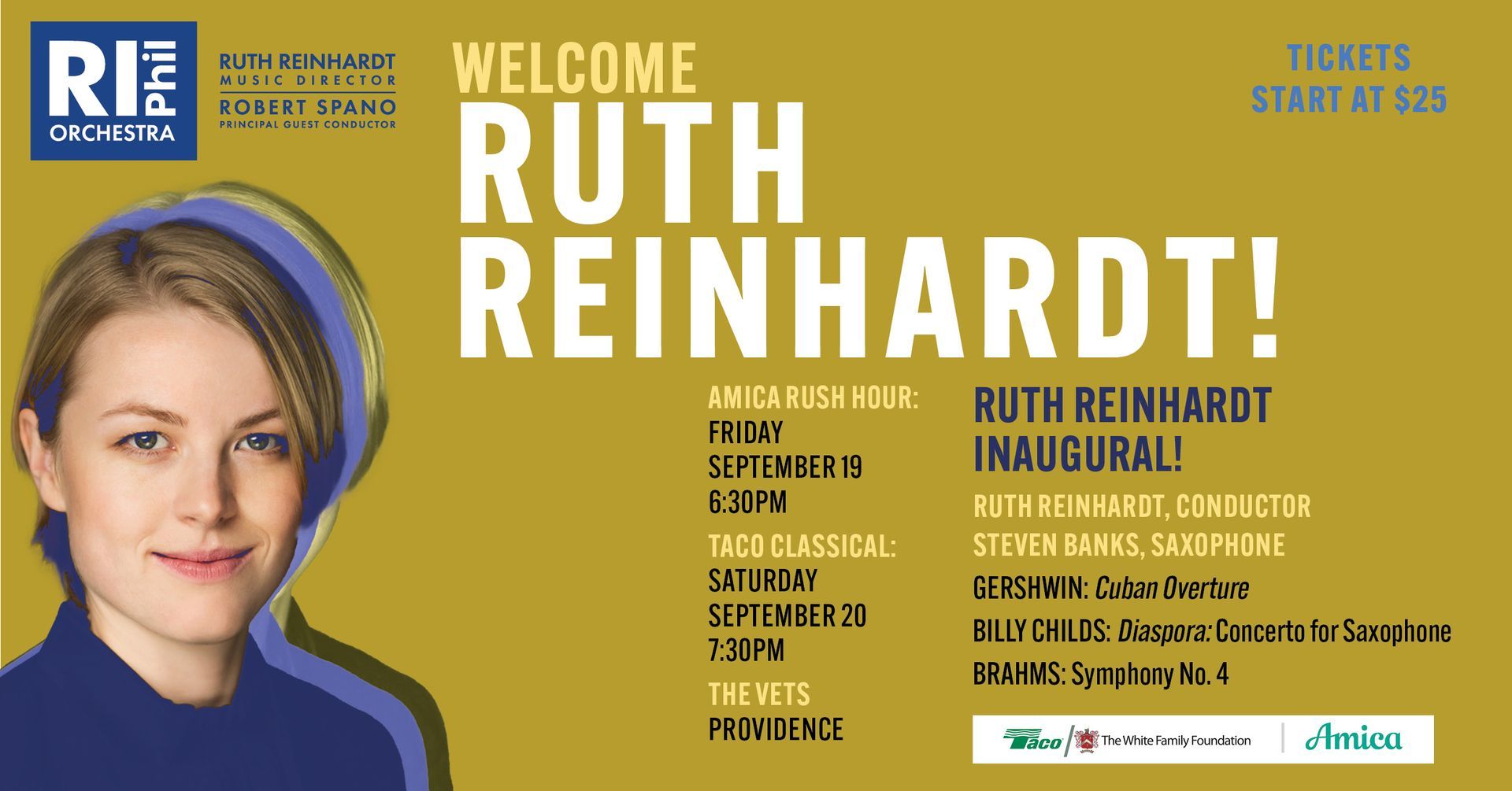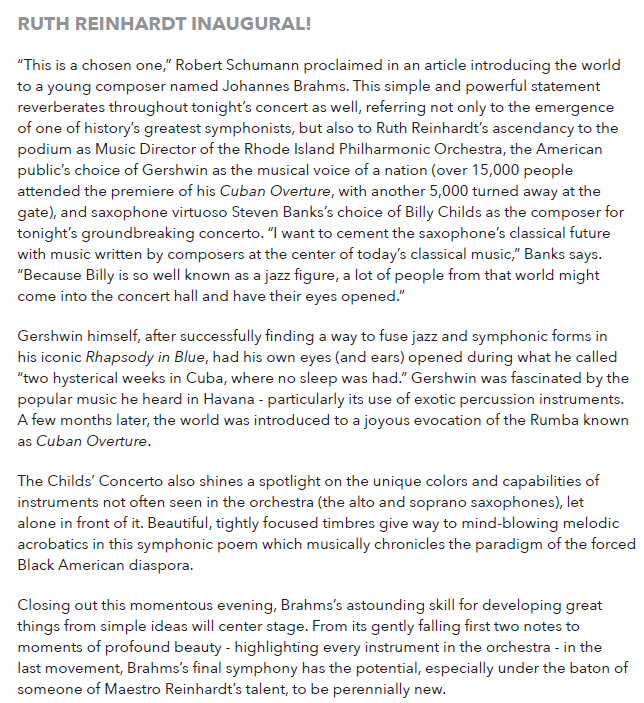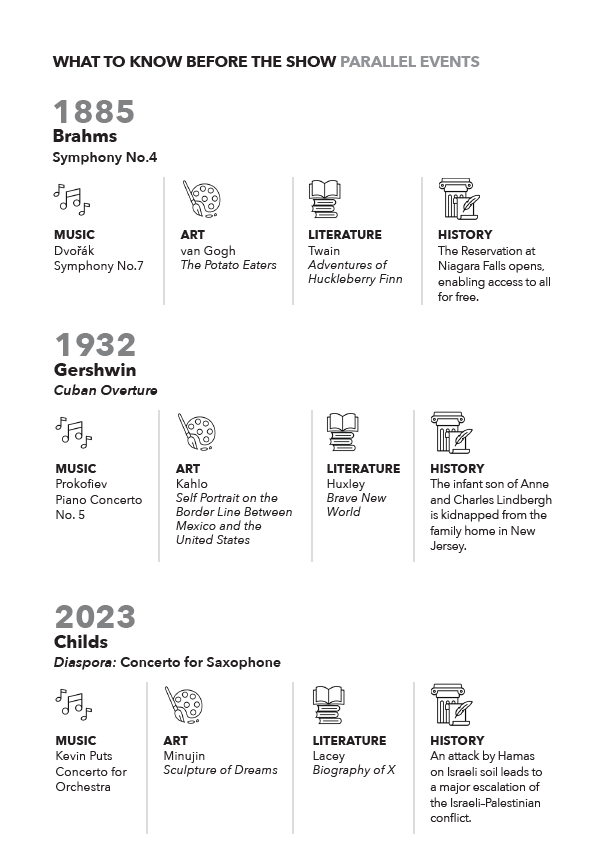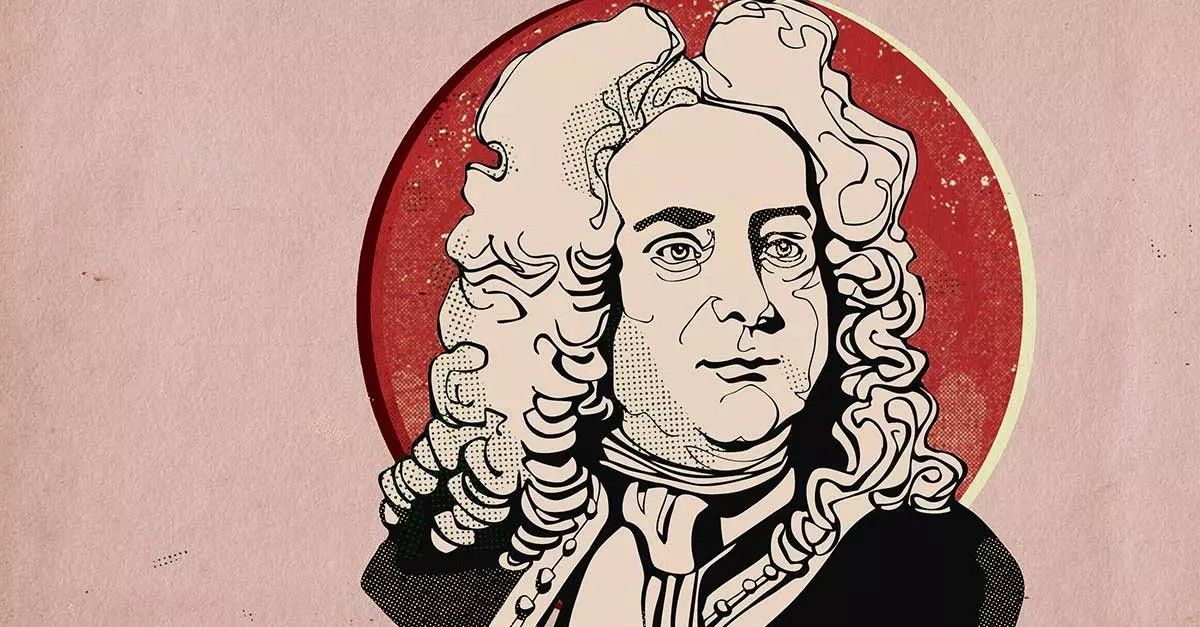THE STORY BEHIND: Billy Childs' "Diaspora: Concerto for Saxophone"
Share
On September 19 & 20, Music Director Ruth Reinhardt and the Rhode Island Philharmonic Orchestra will present RUTH REINHARDT INAUGURAL with saxophonist Steven Banks.



Title: Diaspora: Concerto for Saxophone
Composer: Billy Childs (1957- )
Last time performed by the Rhode Island Philharmonic:
This is a RI Philharmonic Orchestra premiere. In addition to a solo saxophone, this piece is scored for piccolo, two flutes, alto flute, oboe, English horn, two clarinets, bassoon, contrabassoon, three horns, two trumpets, trombone, bass trombone, timpani, percussion, harp, piano, celesta and strings.
The Story: Excerpts from Composer’s note by Billy Childs:
Diaspora is a symphonic poem which strives to chronicle the paradigm of the forced Black American diaspora, as sifted through the prism of my own experience as a Black man in America. When Steven Banks approached me about the piece, we decided that, much in the same way that Ravel’s Gaspard de la Nuit illustrates three poems by Aloysius Bertrand in three separate movements, so would this concerto do with poems by Black poets. But then I started thinking of the elegantly succinct and fluent structure of Barber’s Symphony No. 1, where in one multi-sectioned suite, he brilliantly ties together a handful of thematic materials into a seamless and organic whole. So I used the poems Steven and I settled on (Africa’s Lament by Nayyirah Waheed, If We Must Die by Claude McKay and And Still I Rise by Maya Angelou) as guideposts for a three-part storyline.
Movement I: MOTHERLAND
The program of the composition starts out on a positive note. The first theme played, by the soprano saxophone, and later joined by an uplifting scherzo accompaniment from the orchestra, is meant to evoke a sense of well-being and security. But it’s not a utopia I’m trying to illustrate here; rather, a sense of purity. After a 16th-note pattern in the strings that signals trouble on the horizon, the soprano saxophone takes on a more urgent tone, playing short bursts of melodic fragments. Then a battle ensues, a battle between the slave traders and the future slaves, as signaled by the triplet figures in the soprano sax accompanied by triplet patterns in the orchestra, and climaxing in an orchestral tutti section bolstered by a brass fanfare. After a dissonant orchestral hit, the soprano sax utters a melancholy theme as the slaves are being led to the slave ship. This takes us to the first saxophone cadenza which, to my mind, represents a moment of painful reflection about being captured like a wild animal and led to a ship, the destination of which is to a future hell.
Movement II: IF WE MUST DIE
Part two of the journey begins with the first vision of the slave ship. This is illustrated by a loud tutti blast in the orchestra, following a slow six-measure buildup. The alto saxophone is now the voice of the piece, introducing a rapid 12-tone theme which turns out to be a constant phrase weaving in and out of the entire piece at various moments. Sweeping rapid scales in the lower strings, woodwinds and harp describe the back-and-forth movement of the waves. This section develops and reaches a high point with a jarring saxophone multiphonic pair of notes followed by a forearm piano cluster; we now see America for the first time, from the point of view of the slaves. Confusion, rage and terror are followed by resistance, anger, and rebellion, after which the alto saxophone plays a short and tender cadenza which signifies the resilience of Black Americans and the introduction of the idea of self love, self worth and self determination.
Movement III: AND STILL I RISE
This final section is about Black empowerment. The church has always been a cultural focal point in the Black community, a sanctuary providing psychological and emotional relief from the particular hardships of Black life in America. So, this final chapter of the piece starts out with a hymn-like passage, a plaintive reading orchestrated for just alto saxophone and piano, as though the solo saxophonist were a singer accompanied by a piano during a Sunday church service. Soon the melodic theme in the alto sax is treated with a lush accompaniment, as a healing self-awareness and love becomes more palpable. This is followed by a march-like ostinato which symbolizes steely determination. As the alto sax plays rapidly above the orchestral momentum, we finally reach the victorious fanfare at the conclusion of the piece. Maya Angelou’s shining poem reminds us (and America) that Black people cannot and will not be held to a position of second-class citizenship—we will still rise.
Program Notes by Jamie Allen © 2025 ALL RIGHTS RESERVED.
Recommended Recordings:
The Billy Childs Saxophone Concerto has not yet been recorded, but there are excerpts and detailed explanations available on YouTube.
Tickets start at $25! Click HERE or call 401-248-7000 to purchase today!







